Fun with N-Grams!
(12/23/10)
Since nothing says “Happy Holidays!” like graphs, here’s a post about my new favorite time waster, the Google N-gram site.
Google has made their vast database of digitized books available
for searching and now anyone can go and look at the frequency a particular
word or phrase. For example, the other night I entered the words Vampires
and Zombies into their database and it spit out the following graph of the
relative popularity of those words in books published between 1800 and 2000:
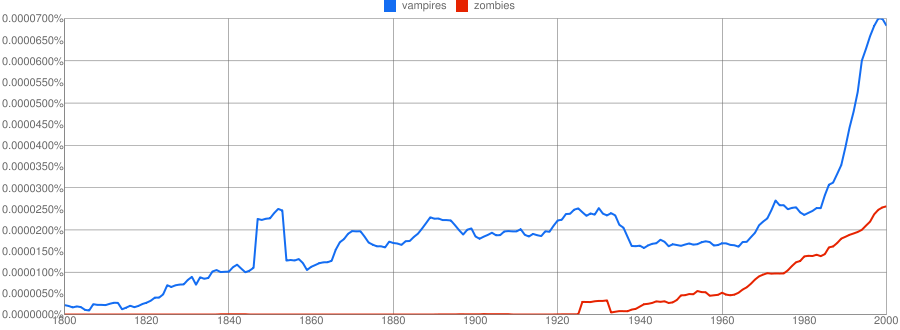
Go, zombies, go!
Pretty cool, right? And so for the first time you really can
compare apples and oranges:
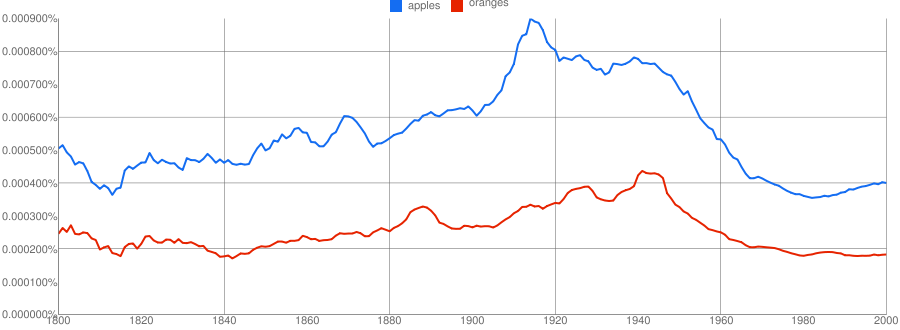
So what can this tell us about magic? Well for starters, it
can give us a history of what we call those who venture into the dark side
of sleight of hand:
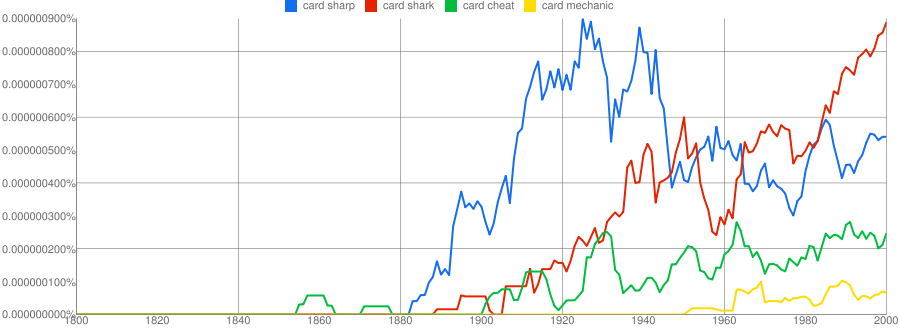
The Card Cheat seems not to have existed in the popular imagination before 1850. Between 1885 and 1925, he arrives with a vengeance and back then, he was usually called a Card Sharp.
Here are the good guys:
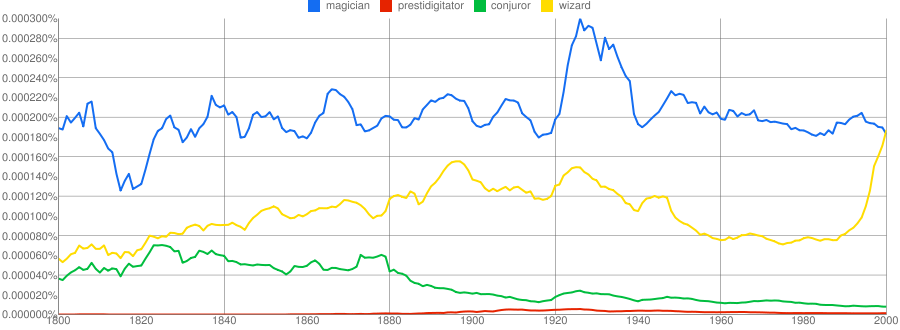
Note the influence of a certain series of books which began in the 1990s.
Now let’s check on the horse race between our two most
popular magic words:
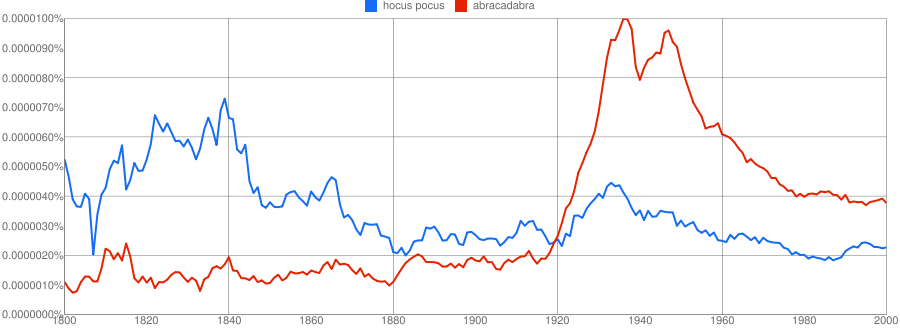
Hocus Pocus owned the 19th century, but what was going on
in the 1920s to make Abracadabra so popular? I’d guess there must an
explanation as obvious as J.K. Rowling’s influence on the word Wizard.
Suggestions?
Let’s look at the relative popularity of various magic tricks:
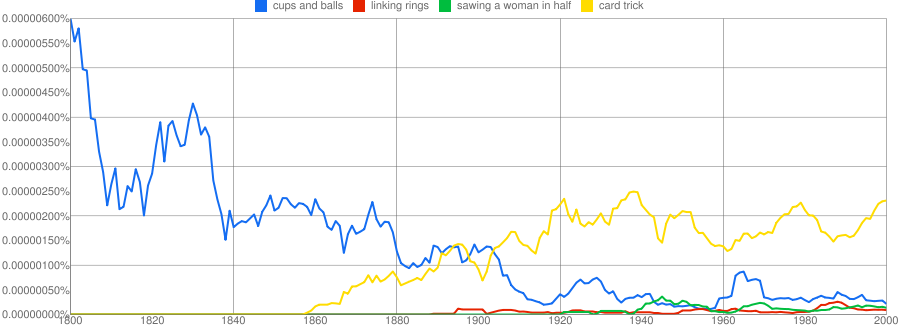
Look at the huge presence the Cups and Balls had in the early 1800s! The history of close-up magic could be described as the shift from the Cups to the Cards.
And in case you’re curious which came first, card cheats
or card tricks:
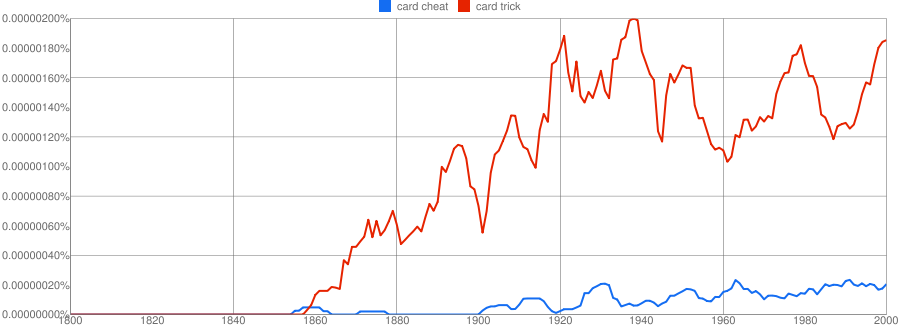
It’s the cheats by a nose!
Here are some golden age magicians:
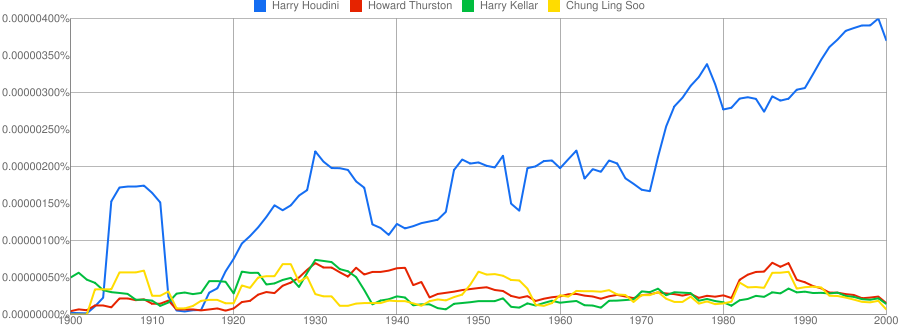
No surprise that Houdini dominates, but the shape of his fame is interesting – that early steep-sided plateau corresponds to his big escape period – apparently people jumped off that band wagon as quickly as they jumped on. The slow climb in the late teens and early twenties corresponds to the period he was exposing spiritualists. But it’s only after his death that his greatest cultural fame is achieved.
And how does one of the 20th century’s greatest debunkers compare to one of the century’s most debunked?
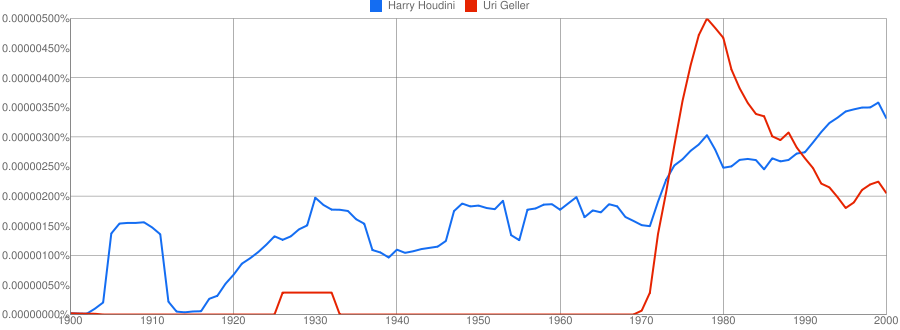
Of course, Geller’s best trick was teleporting back to the 1920s. (If you don’t buy that, Google has some techie explanation for such time transgressions here.)
Finally, I leave you with a graph that will hopefully warm
every magician’s heart this holiday season:
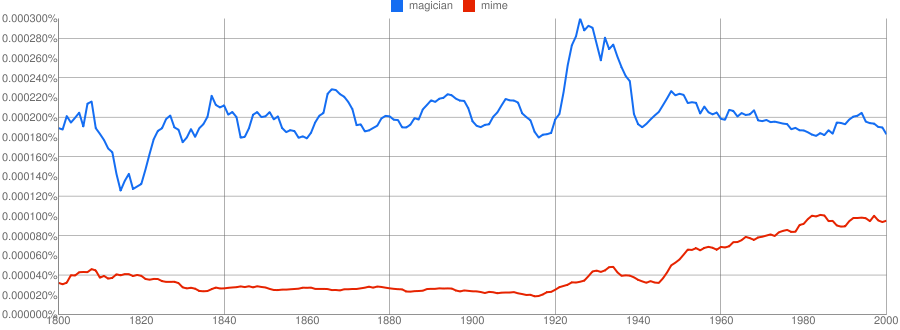
We’re still winning! Happy Holidays!
Go Back to Film and Magic Blog

©Chris Philpott 2010. All rights reserved. Original designs and content
by Kathleen Breedyk and Chris Philpott.
Contact Us .

